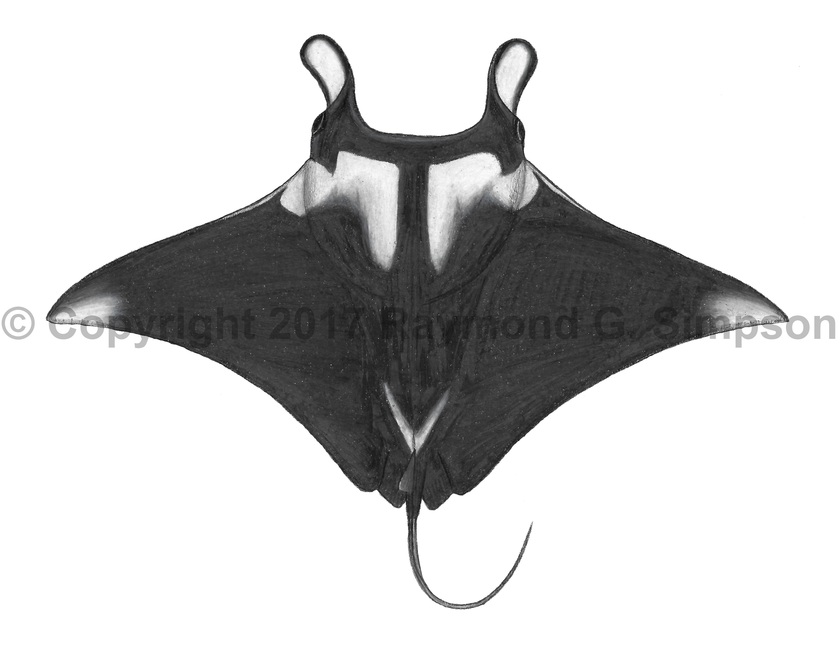
Common Name
Giant Manta Ray
Year Described
Walbaum, 1792
Identification
Disk huge and broad (wider than long). Head large, protruding and wide with a wide terminal mouth. Teeth present on lower jaw but not on upper.
Cephalic lobes very large. Trunk thick with well developed ventral gill slits. Eyes on side of head. Spiracles behind eye on dorsal side of head. Pectoral fins angular with pointed tips. Anterior disk margin straight or convex. Posterior disk margin strongly concave. Tail long. Tail spine present but reduced and embedded in a lump on tail base. Dorsal fin single and triangular on base of tail. Pelvic fins small. Skin with dense denticles.
Color
Dorsum black with variable white markings. Most consistent is a symmetrical white marking on each side of the head that is parallel to the mouth's edge. Area in and around mouth black. A white "V" shaped marking at the base of the dorsal fin and usually on the tips of the pectoral fins. Ventrum varies from almost all white to almost black. There is usually always at least one black spot associated with the last gill slit. Cephalic lobes white with black margins of varying width.
Size
Huge: maximum size to over 7m. Adults mature between 3.7-4.7m in width with females averaging larger than males. Newborns are already over a meter in width.
Habitat
Pelagic in coastal waters, and around oceanic islands and seamounts.
Range
New England to Uruguay, including the Caribbean and Gulf of Mexico.
References
Last, P.R., White, W.T., Carvalho, M.R. de, Séret, B., Stehmann, M.F.W & Naylor, G.J.P (Eds.). 2016. Rays of the World. CSIRO Publishing, Melbourne. 790p.
Other Notes
The manta rays have been shown to consist of at least two species: the worldwide Mobula (=Manta) birostris and the Indo-Pacific and eastern Atlantic M. alfredi. There is evidence that an undescribed manta similar to M. alfredi occurs in the Caribbean Sea but this problem has not been resolved. The Reef Mantas differ from the Giant Manta by coloration, number of lower jaw teeth, and the absence of the lump on tail containing a tail spine.
Phylogenetic work has strongly supported the paraphyly of the genus Mobula with the genus Manta nested in a clade with Mo. japanica and Mo. tarapacana. Since Mobula japanica is the type for the genus, all manta rays should be placed into the genus Mobula to restore monophyly.